INDIANAPOLIS — Indiana reported a record number of new COVID-19 cases in October, when 60,966 Hoosiers got sick with coronavirus.
I was one of those cases.
I don't think my two-week battle with the virus was particularly unique. It was a rough couple of weeks filled with several surprises – but no ER visit, no ventilator, no tragic ending like the many I have heard about. In that way, I was very lucky.
So why am I sharing my story?
Well, over the past eight months, I had reported on coronavirus almost daily and interviewed multiple families whose loved ones were sickened or killed by complications of COVID-19. But until the day I was diagnosed with the virus, I didn’t personally know anyone else who had it. I did not expect to be the first person I actually knew with COVID-19. Despite knowing I was not alone, it was a lonely and scary feeling.
My mind started racing: Would my symptoms be mild and short-lived? Would the virus attack my lungs and force me into a hospital intensive care unit? With so many other reported COVID-19 cases, how did I not know anyone else who had it? Did some of my friends get it and just keep quiet? Should I tell other people about my diagnosis or is that considered taboo? Would I be judged for having the virus and viewed as irresponsible for allowing myself to be infected? I didn't have any answers. And since I didn't know anyone who had been through whatever it was I was about to go through, I didn't know anyone to ask, "Hey, how did you handle this? What advice can you offer me?"
So I decided early on to be transparent with my family and friends and co-workers, and I'm eager to share with you some of the insights and lessons I learned last month. I pray you never get COVID-19. If you do, hopefully my experience will help you feel less lonely and scared.
The week it all started
In retrospect, I was showing some early signs of COVID-19 before I truly realized it. I was a little congested and my throat was a little scratchy, but I figured it was my fall allergies kicking in. It was the first week of October, trees in my neighborhood were nearing peak color, and if I were going to get coronavirus, this was perhaps the best week to get it.
Usually, I would be out "on the street" with my photojournalists, interviewing folks nearly every day. That's what I had been doing for months: meeting my cameraman at the site of our interviews (we did not drive together to maintain CDC and corporate social distancing guidelines), putting on a face covering and slathering my hands in 80 percent alcohol-based hand sanitizer before I got out of my car, standing 6 to 10 feet away from the people I interviewed, then parting ways with my co-worker to log and write my news story in my dining room while my photojournalist then edited the story from his living room.
But the first week of October, I didn’t have to leave my house. My bosses had set aside that week for me to research and write investigations. No in-person contact with other people required, socially-distanced or otherwise. So I didn't think too much about my sniffles and scratchy throat before I went to bed on a Tuesday night.

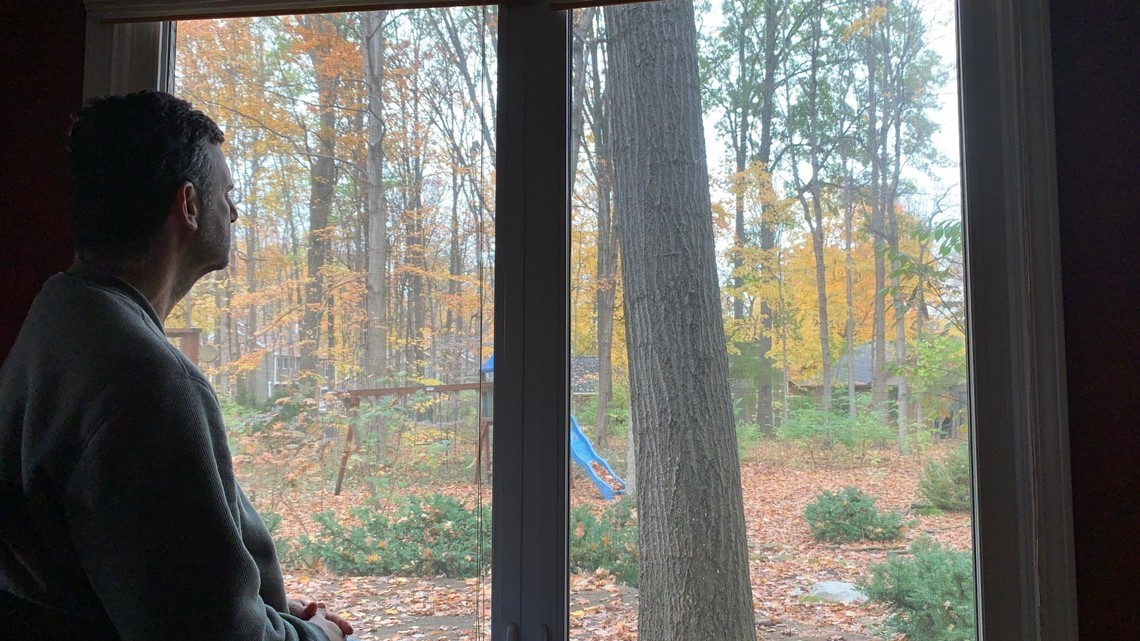
Wednesday morning wasn't much different. I remember feeling sluggish in the morning. I started coughing a few times. I recall wondering if I was coming down with a cold because I didn't have much of an appetite. In fact, I hadn't eaten breakfast or lunch by the time I attended an online 2:30 p.m. staff meeting. During that meeting, my news director and general manager both reminded 13News staff to be diligent about wearing a mask, social-distancing and avoiding large crowds. They urged us not to let our guard down – something we have heard at every single staff meeting for the past eight months.
After the meeting, I made several phone calls and returned a bunch of e-mails I had received earlier in the day. Feeling exhausted, I then walked upstairs to take a nap before dinner. That was around 5:30 p.m. I wouldn't get out of bed again for more than 17 hours.
Lots of symptoms
Thursday morning is when I knew I was actually sick. It was a kind of sick I had felt before – or so I thought.
My body ached all over. My head hurt. I had chills and my teeth were chattering – likely signs that I had a fever, but I was too tired to get out of bed to find a thermometer. It didn't make sense that I could still feel so tired after being in bed for so long (at that point, about 15 hours), but I recalled feeling the same way on several occasions when I had the flu. I went back to sleep, and finally got out of bed around 10:30 a.m. I felt terrible, but I told myself I could feel lousy at my dining room table while returning e-mails and analyzing state government spreadsheets just as easily as I could feel lousy lying in bed. I was wrong.
By noon – about 90 minutes after I had gotten out of bed – it was clear I couldn’t concentrate enough to actually get any work accomplished. I was nauseous. My hands were shaking so much from having chills that I couldn’t read many of the words I had written in my notebook. All I wanted to do was to go back to sleep. So I did.
I slept from 12:30 p.m. until 8:30 p.m. Thursday. When I sat up in bed, I was weak and dizzy. Without even realizing it, I hadn’t eaten anything in 48 hours. I drank some water and toasted half a bagel. Then I went back to bed.


The next morning I woke up still aching all over with a 101-degree temperature. I got a COVID test at a nearby pharmacy. It was one of those drive-thru do-it-yourself testing sites, so I had the pleasure of sticking a long cotton swab up both of my nostrils to see if the virus was present in my nasal cavities. I then went home and called my boss to let her know what was going on, and I scheduled an online doctor appointment for that afternoon. I had little energy but didn’t feel as lousy as the day before. In fact, by bedtime my temperature had dropped back to normal.
I woke up Saturday morning feeling surprisingly improved – improved enough to mow my lawn and pick up some leaves. It was surprisingly exhausting – more like mountain climbing than lawn mowing – and I had to take a break from the yard work every 15 minutes to rest. But the outdoor activity helped my spirits. My headache and body aches seemed less noticeable. For the second consecutive night, I went to bed with no fever and felt optimistic that I was indeed improving from whatever illness I had.
I slept in Sunday morning, and when I checked my cell phone just after 10 a.m., a message from the pharmacy was waiting for me. My test result was available online, so I logged in immediately to view it. My eyes quickly locked on red letters at the top of the lab report: POSITIVE.

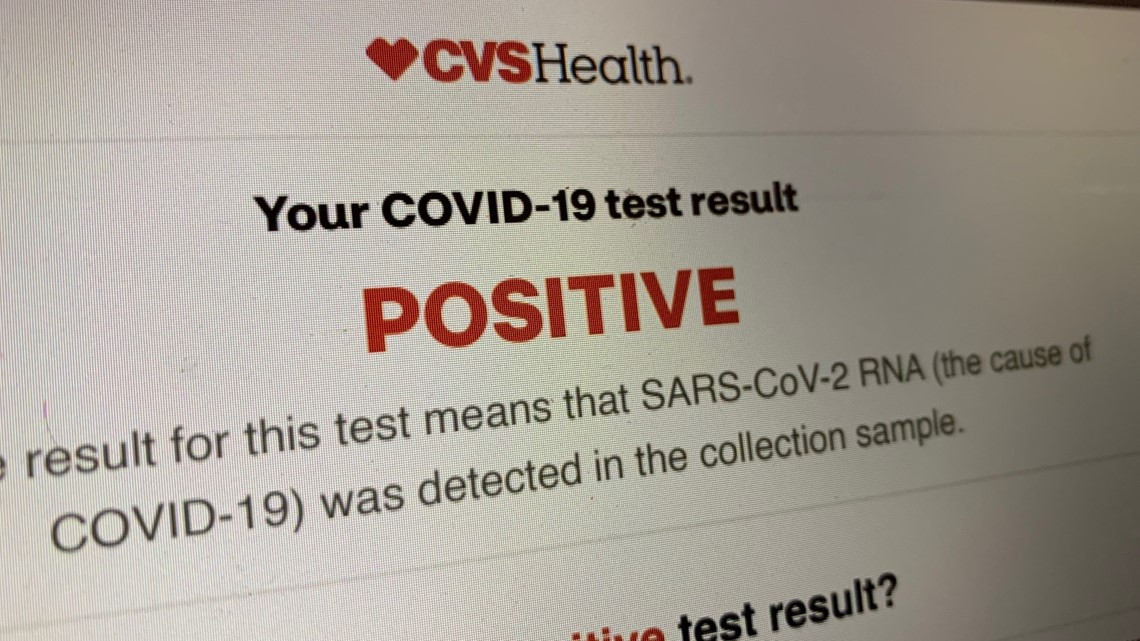
I was not at all surprised; the test confirmed what I had already suspected. But at that moment, staring at the formal diagnosis and knowing I had a virus that had already contributed to the deaths of more than 200,000 Americans, I still felt scared.
Fortunately, my virtual doctor appointment two days earlier helped to calm my fears.
My weapons for fighting COVID
My doctor did not wait for my test result to take action. Hearing my list of symptoms, he correctly assumed I was positive and, based on my own medical history, explained the tools I needed to have on hand to minimize my risk of being hospitalized. Those tools included:
- A reliable thermometer to track my temperature. I already had a traditional thermometer at home. The act of shaking down the mercury inside the thermometer after each use became too tiring as my COVID progressed, so I eventually purchased a digital thermometer that was much easier to use.
- Tylenol to keep my fever under control. It also lessened my body aches and chills and helped me sleep more comfortably.
- A prescription for a steroid dose pack to help ward off breathing problems. My doctor advised me to start taking the steroid right away if I began to have any trouble breathing. MethylPREDNISolone helps block inflammation in the body; swelling and inflammation of the airway is one of the leading symptoms that results in COVID patients needing hospitalization.
- A pulse oximeter to monitor my blood oxygen level. The little digital device fits comfortably on a finger and quickly reads the oxygen saturation of blood. It allowed me to track my oxygen levels at home so I could understand if my breathing was bad enough to start the steroid — or to get to an emergency room. My doctor said if it registered below 90, it was time to seriously consider a trip to the hospital. My readings never dropped below 93.
- A nebulizer for home breathing treatments. Often used in hospitals to treat patients with respiratory problems, a nebulizer provides a fine mist of albuterol (or other medication) directly to the lungs. Getting a prescription for the device allowed me to give myself home breathing treatments to help keep my lungs clear without a visit to the ER.
Having access to all of these things at my home gave me peace of mind when I received my COVID diagnosis a few days later. Again, some of those items might not be appropriate for everyone experiencing COVID symptoms, but for someone like me who has asthma, it was very reassuring to know I had weapons at my bedside that could help reduce the chances of a late-night COVID visit to my nearest hospital.
A week of surprises
By Sunday night, six days after my first COVID symptoms, I felt pretty good. Despite learning I had COVID earlier in the day, my fever remained normal and nearly all of my symptoms had improved or disappeared. The last remaining symptom was fatigue. Based on my steady improvement over the previous few days, I expected to wake up the next morning feeling stronger – perhaps even back to normal. The coming week would prove just how little I truly understand the virus.
Monday morning, I encountered my first setback. My fever returned (100.3), as did my headache, body aches and chills. I was able to work from home, but I felt much worse than I had over the weekend. My fever would reach 101.8 by mid-week, contributing to continued aches and chills.

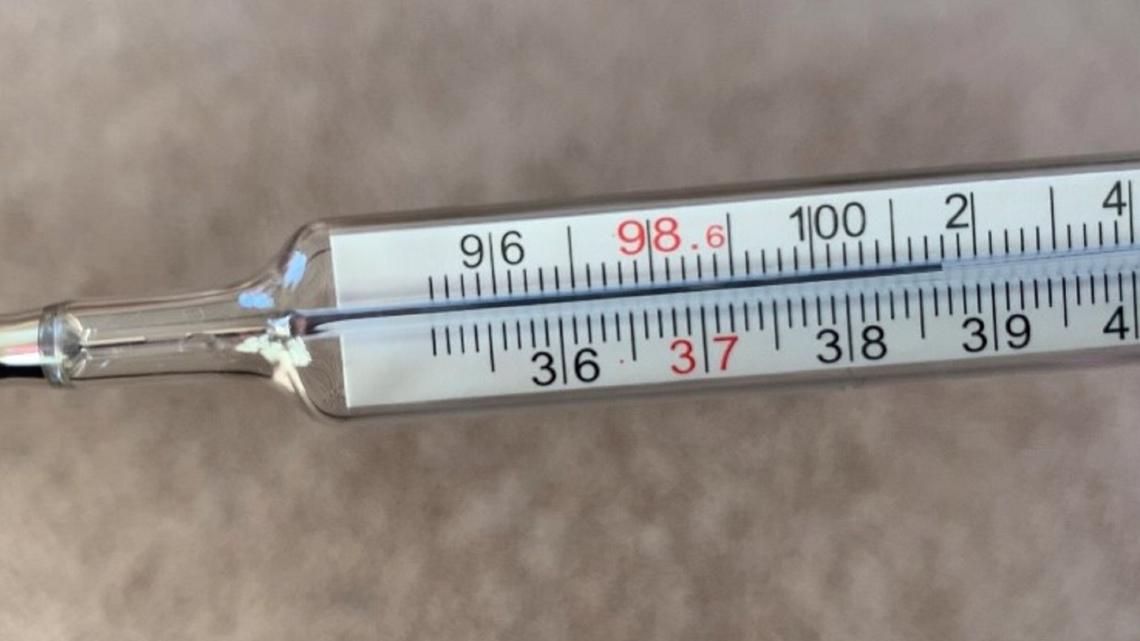
I knew that COVID might make me feel tired, but I had never experienced the kind of debilitating exhaustion I felt during my second week with COVID. I recall lying in bed for hours, telling myself I needed to get up but not having the strength to stand. It was a tired that engulfed my body and my mind, forcing me to take several naps a day. In retrospect, the ongoing fatigue was the biggest challenge I faced during my illness.
I also knew I might lose my sense of taste – which I did for four days – but I wasn't expecting to completely lose my appetite. It simply vanished. I had to force myself to eat, but I didn't eat much. I didn’t feel like eating because I was so exhausted and nothing tasted good, and I think the lack of calories contributed to my fatigue. It was a viscous cycle. While I had COVID, I lost 14 pounds in the first 14 days.
I did drink a lot of water, which my doctor said was really important. If it weren't for that, I might have ended up in the hospital with dehydration.
One of the other wise decisions I made was to listen to advice from my wife. (I find that's also a good decision even when I am not battling COVID.) To counter the fatigue, she suggested I take a walk every day to get some exercise, and that really seemed to help. A normal walk around my neighborhood usually takes me about 30 minutes. The same walk with COVID took 45 minutes, but despite my exhaustion, being outdoors and breathing fresh air – even through my mask – was actually energizing.

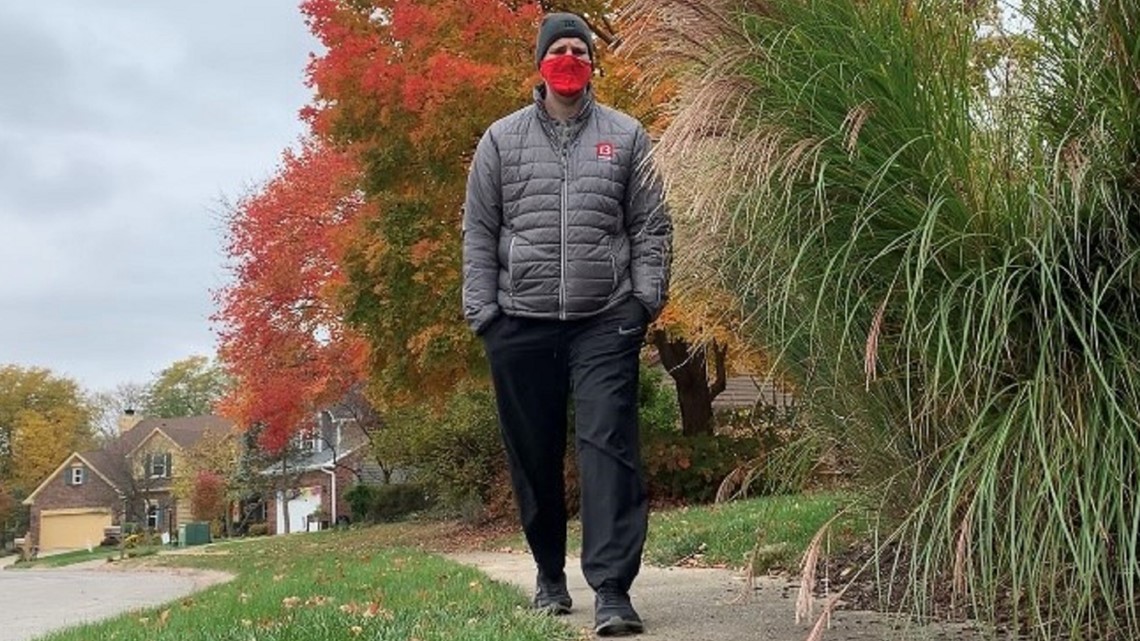
Slowly, my energy came back. I was able to rake leaves on the weekend and continue to work from home – even filing eight daily news reports – during my quarantine.
After two weeks, I felt pretty much like myself again. But the biggest surprise was still to come.
"What in the world do I do now?"
After two weeks of quarantine, I was eager to return to the things I had been able to do before I got sick. And according to guidelines from the U.S. Centers for Disease Control and Prevention (CDC), it was acceptable for me to end my isolation since it had been at least 10 days since I first experienced COVID symptoms and at least 24 hours since I had last recorded a fever.
But out of a sense of caution, before ending my quarantine, I wanted to get another COVID test just to make sure I was clear. By that point, it had been 17 days since I first got sick, and I had been fever-free for five days with no Tylenol. I was also feeling much better, with only some lingering fatigue that would occasionally sneak up on me. No cough or congestion. No aches or chills or nausea. No breathing problems – the one thing I had feared most about COVID. So when I again poked a cotton swab into my nose to search for signs of the virus, I felt confident I would soon have the reassurance I had been looking for.

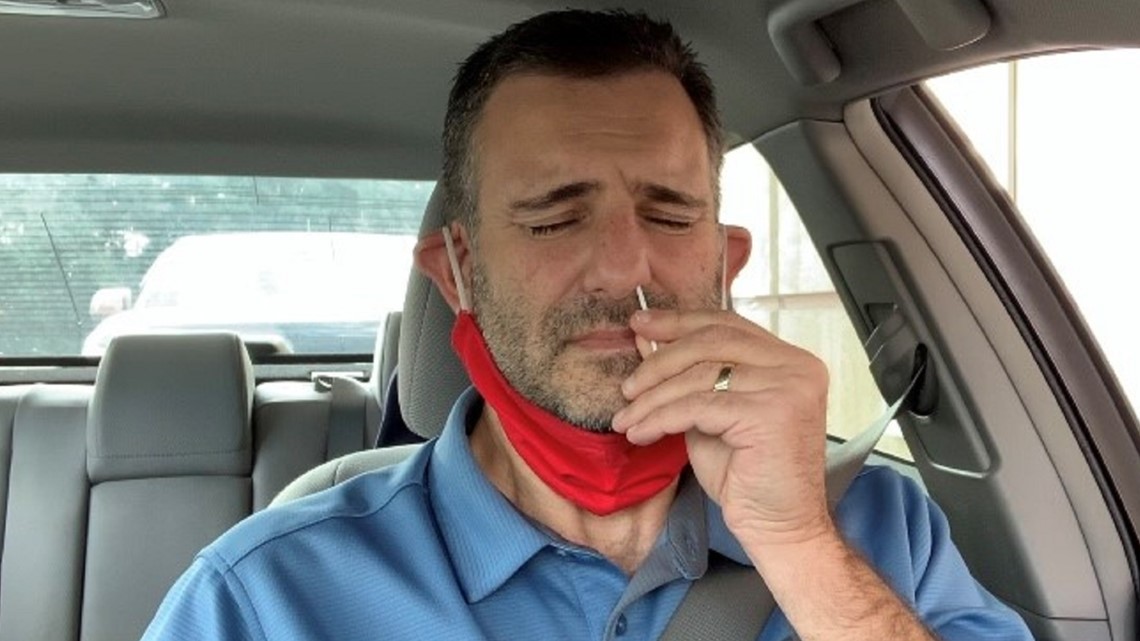
When I received the test result two days later, my hopes were dashed. I tested positive. Again.
I sat in bed staring at the familiar red letters on my cell phone, simply shaking my head. I had no idea what it meant or what to do. The CDC said it was OK for me to be around other people, but a second positive test result made me question that.
I called my boss and shared my unexpected breaking news. I remember asking her, "What in the world do I do now?"
My boss told me to call my human resources department. HR told me to call my doctor, who was not in the office that day. I made a virtual appointment with another doctor in the practice, and that doctor graciously allowed me to share his comments with you.
"We've seen this before," said Dr. Jakota Snyder, IU Health primary care physician. "I had another [COVID] patient who tested positive, negative, positive, positive, negative over the course of a month."
It was good to know I was not alone. But what did my new test result mean about when I could end my quarantine and whether I could still infect other people?
"We know you had COVID, but we don't have a definitive answer how long people will continue to test positive. The CDC guidance is our gold standard right now, and you've met all the criteria from the CDC," Jakota said. "As long as you practice social distancing and continue to wear a mask – the same precautions we're advising for everyone – you're good to go and can return to regular activity comfortably and safely."
I was relieved to hear that. I was also curious to learn how long I would continue to test positive, so I got another COVID test the following week. This time, the lab report showed my result in green letters; 24 days after I felt the first symptoms of COVID, I was finally NEGATIVE.
Lessons learned
I was not the only person in my immediate family to get COVID. As soon as I got my initial test result, my wife and daughter also got tested. They had COVID too. A few days later, my son got tested at college, and he also tested positive. We suspect we likely passed the virus to one another, but who got it first and where it was first contracted are still a mystery. Contact tracing did not provide definitive answers. Thankfully, my wife and children did not develop any serious symptoms. Their experience was more similar to a mild cold than a prolonged case of flu.
It's a good reminder: everyone's experience with COVID is a little different. My experience is just one of millions – not a blueprint that can predict how the virus will impact anyone else.
And yet I do have some takeaways from my personal COVID journey:
- Get tested as soon as you experience COVID symptoms and do not wait to quarantine. I often "push through" when I'm feeling sick to honor my previous commitments. I am glad I did not do that this time. Once I felt sick, I canceled all appointment and commitments I had outside my home – even before I scheduled my COVID test and got my test result. Had I waited to quarantine until after I got that result, I would have exposed many other people to the virus.
- Talk to your doctor and develop a COVID game plan. Talking to my doctor right away – even before I had a formal COVID diagnosis – was a big deal for me. Amid the uncertainty of the virus, having a plan and the tools to carry out that plan helped me both physically and mentally. I never needed to take the steroid, but knowing it was sitting on my nightstand if I started to struggle to breathe was incredibly reassuring. Monitoring my temperature and blood oxygen levels on my own was empowering – giving me peace of mind that I was still doing OK when I had doubts.
- Eat and drink. During my COVID recovery, I often forgot to eat – or simply chose not to – because I had no appetite and was exhausted. Not smart. I think this contributed to my fatigue and prolonged my recovery. Had I also forgotten to drink (luckily I did not), I would have risked dehydration and hospitalization.
- Stay active. It was really tempting to lie in bed all day while I had COVID. I believe walking, mowing the lawn and raking leaves, riding my bike – things I could do away from other people while I was quarantined – helped speed my recovery. The exercise and fresh air provided a boost, both physically and emotionally.
- Follow COVID precautions. I discovered even a moderate case of COVID is nothing to take lightly, so I highly recommend doing the easy stuff you can to limit your exposure: wear a mask, wash your hands frequently and practice social distancing. I know what many folks will say: You did all those things and you still got it, so why bother? Yes, I did all those things public health experts recommend and I was still infected with the virus. Taking precautions against COVID offers no guarantee that you won’t get it. But at a time when new cases are still soaring in Indiana and around the country, any simple steps that can help reduce risk are, I believe, well worth taking.
- Take care of yourself now. Due to some long hours at work and juggling lots of responsibilities in my personal life, I was particularly run-down in the days leading up to my illness. I suspect the lack of sleep, eating a poor diet, not taking time to exercise and added stress might have reduced my ability to fight off a virus, increasing my risk of getting sick. Find time for sleep and self-care. Any opportunity to boost your immunity now can only help if you come in contact with COVID later.

